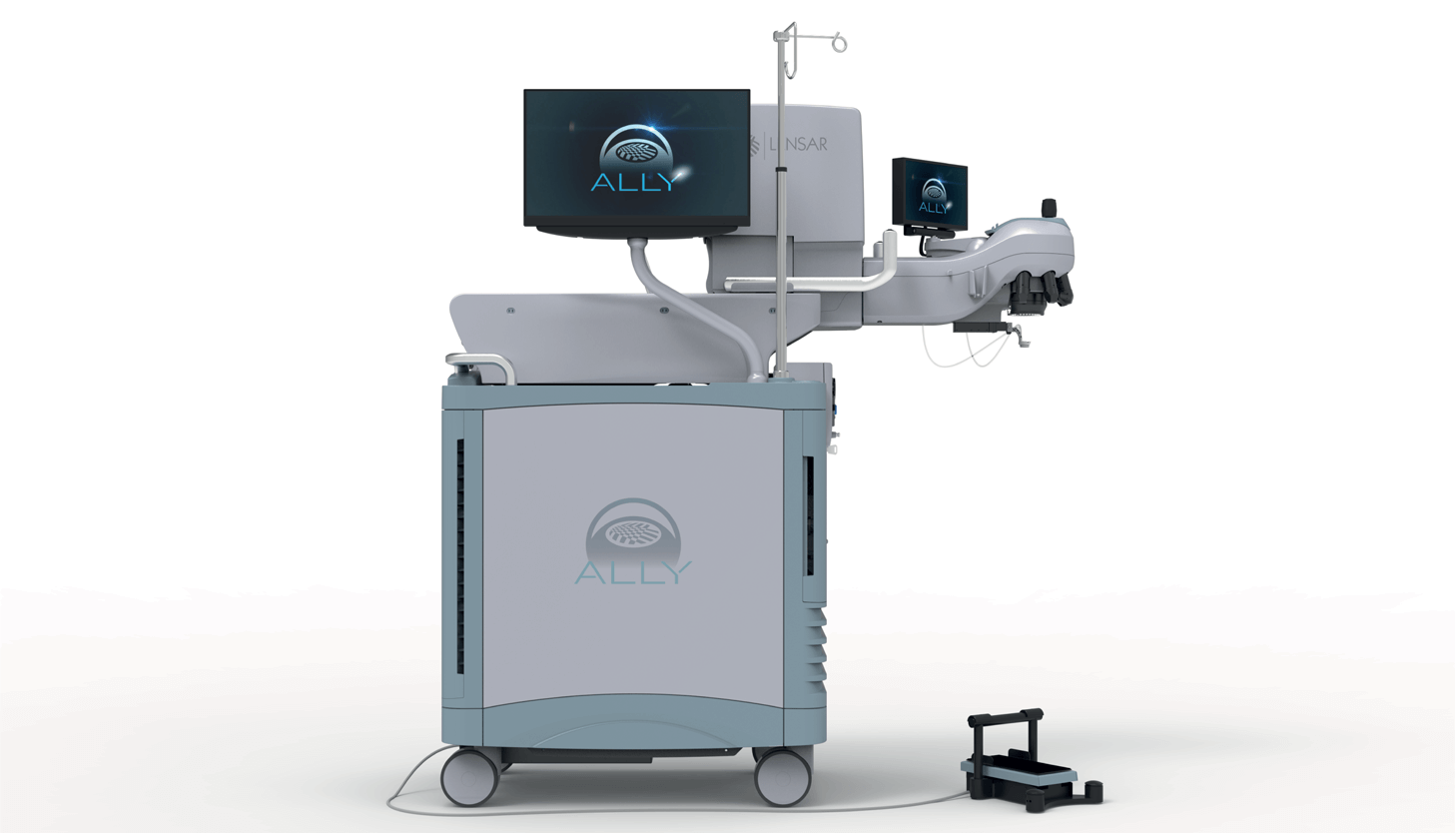
Femtosecond laser-assisted cataract surgery (FLACS) is a technology that is growing and evolving, taking advantage of the “perfect storm” created by current market dynamics. The ALLY Adaptive Cataract Treatment System from LENSAR is the next stage of the FLACS evolution, taking a generational leap forward as the first platform to combine world-class imaging and next-generation dual-pulse femtosecond laser in a single system.
The continued introduction of premium IOLs is driving the need for better outcomes than the current generation of FLACS can offer. There is a growing body of clinical evidence supporting LENSAR-guided FLACS procedures and their contribution to improved patient outcomes compared with manual cataract surgery. More and more patients are looking for better post-op vision with a reduced need for glasses – and they are willing to pay a premium. Surgeons who offer FLACS are eager to support these patients by delivering superior results.
There has also been an increase in the number of private equity-owned ophthalmic groups. These practices are well funded and not only can afford a laser, but are often willing to make the investment to drive revenue, profitability, surgical efficiencies, and improved patient outcomes within the group, making FLACS an increasingly important offering to stay competitive. It is clear that use of this technology will only increase with time, so making sure FLACS is optimized to meet the needs of clinicians and provide optimal outcomes for patients is paramount.
Any innovation seeking to revolutionize a field must take into account the current state of affairs and users’ unmet needs – and ALLY is no different. Developed to overcome the limitations of current-generation femtosecond lasers used in cataract surgery, ALLY makes significant strides in several key areas. The system’s dual-pulse laser provides
tissue-specific performance and is twice as fast in the lens and four times faster in the cornea than the current generation system. Its small footprint enables it to perform a completely sterile FLACS procedure in any operating room or office- based surgical suite, which can save up to 9.4 minutes per surgery. The system also provides a seamless transition from FLACS to phacoemulsification cataract surgery in the sterile environment, removing the need to move between rooms or beds and reducing the required prep, improving the experiences of surgeons, staff, and patients. The cutting- edge imaging allows surgeons to determine lens density and morphology so they can optimize fragmentation and reduce the overall energy delivered to the eye. The system’s Streamline® Technology for astigmatic management can benefit between 70 and 90 percent of all patients with astigmatism. Finally, ALLY can integrate with over 90 percent of the market’s preoperative devices, enabling precise, iris- registered astigmatic guidance accounting for cyclotorsion without concern for transcription errors.
With six significant upgrades in the last five years, LENSAR is the established leader in laser-assisted cataract surgery. This focus on innovation is what allows LENSAR lasers to perform 78 percent more procedures than the US average (1). Introducing the ALLY Adaptive Cataract Treatment System to market is a testament to LENSAR’s aim of equipping clinicians with new tools and methods to carry out their procedures more efficiently and with superior results. With the ALLY system in the early launch phase in the US, the future of FLACS is bright... and clear.
References
- 2022 Cataract Surgical Equipment Market Report: A Global Analysis for 2021 – 2027, Market Scope LLC.
